Wheat Is Good For You! (But Not How You’re Eating It)
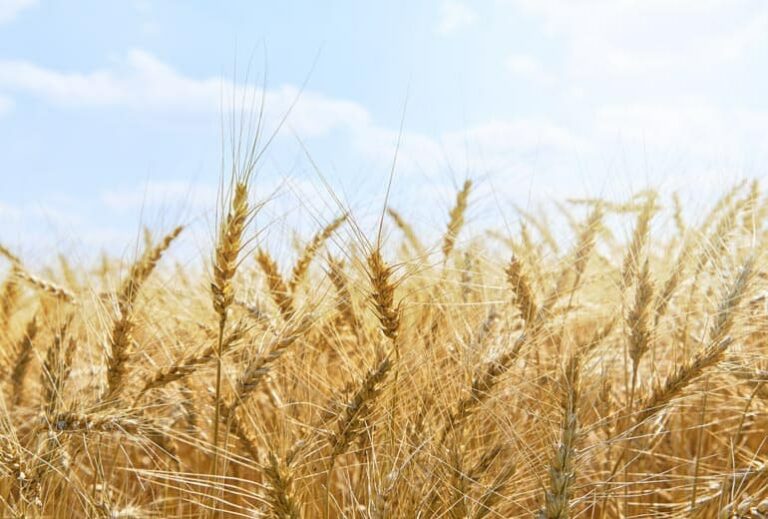
Diet fads, especially those surrounding wheat, have not served America well.
Not one of them has restored us to health, and that’s because trends in the diet arena are typically driven by profit motives. They don’t rely on scientific evidence to back up claims that trendy practices like manipulating macronutrients, eating specifically for your blood type, or putting your body into some kind of unnatural state are positive ways to live.
In this article:
- Advocacy Against Eating Wheat
- Is Wheat Bad for You?
- Eating Wheat and Grains Seasonally
- 12 Steps to Whole Foods
- The Bottom Line: Eat More Unprocessed, Whole Foods
The Advocacy Against Eating Wheat
Each new diet, miracle food, or weight-loss pill is potentially a billion-dollar business. But when science catches up to their claims, each quick fix dies a natural death and eventually proves itself bogus. Then the diet and food industry moves on to the next flashy new fad.
Going on a Gluten-Free Diet
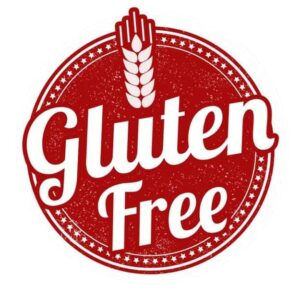
Is food labeled "gluten-free" actually good for you?
Increasingly popular over the last decade, as I’m sure you’ve seen on the shelves of grocery stores everywhere, is the gluten-free diet. Americans are now spending nearly $4 billion annually on mostly processed “gluten-free” products.¹ Propelling that number are gluten-free bakery products, which tend not to be any healthier than regular bakery products.
Marketers of this growing fad industry are generally not keeping your best interests in mind, health-wise. Most gluten-free products use ingredients like added sugar, corn syrup, canola oil, cornstarch, tapioca starch, and more, which are often just as nutritionally deficient as the refined-flour wheat products they’re replacing. The sad part is that some people believe they are eating healthier by following these fads.
[Related: How To Avoid Hidden Added Sugar In Your Food (+ free wallet card!)]
Powdered starches like rice starch (commonly found in gluten-free processed foods) actually spike blood sugar higher than whole wheat products do,² which can open the door for other health issues like insulin resistance and weight gain.
[Related: Green Smoothies For Diabetes: Mistakes, Tips, and Recipes]
Yes, gluten-free products might be free of wheat and gluten, but now you’ve got other ingredients to worry about, like sugar, vegetable oils, heavy-metal contaminated rice, and processed inflammatory starches.
Plus, Dr. John Douillard points to research that people who eat gluten-free products have 400% more mercury toxicity than wheat eaters.³
Many authors and practitioners have promoted the idea that all grains are inherently dangerous. My Facebook Live video on gluten shows the books on my shelves supporting the idea that gluten is making you sick, along with other books that dispute that stance. You can find an argument for any belief in nutrition—that’s the problem.
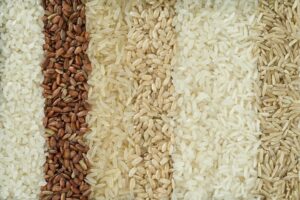
Fad diets that call for cutting out all grains aren’t giving you the whole story.
One thing is clear, however: billions of people in Southeast Asia, Africa, India, South America, and China are virtually disease-free, unlike Americans, despite eating a lot of grains.
Many functional medicine doctors (physicians who look for root causes and treat the body holistically) have even jumped on the anti-grain bandwagon. It’s becoming popular to tell people not only to stop eating white flour, but also to stop eating wheat altogether—the entire broad category of grains, that is.
Other diets, like the Paleo diet and the Autoimmune Protocol (AIP), even advocate for throwing out protein and fiber-rich legumes, too.
[Related: Why Ketosis Diets Will Fail: The Paleo And Keto Manifesto]
We’ve Been Eating Wheat for Millions of Years
According to a study out of the University of Utah, hominids grew grains like wheat and barley 3.4 million years ago, and have only been eating meat for 500,000 years.4 Paleolithic humans ate whole, non-hybridized, in-season grains5 (which goes entirely against the modern “paleo” diet). There is even evidence of ancient Egyptians making bread with raw grains and yeast.6
Grains and legumes have been foundational for cultures worldwide since the dawn of time. The Bible calls bread the “staff of life.” King Tut’s tomb was full of wheat for the afterlife.
Humans have been eating grains and legumes for millions of years, so the idea that these food groups are inherently bad is counterintuitive.
So why, suddenly, are many holistic or functional doctors telling us to completely eliminate these food groups from our diets?
Is Wheat Bad for You?
The anti-wheat movement is based on carefully curated (read: cherry-picked) data that doesn’t necessarily explain the whole picture. The truth is, some people do allergically react to wheat, but the reason why doesn’t exactly match how the diet industry has framed the problem.
Chemicals Like Glyphosate (Roundup)
Ancient humans ate a lot of grain. In fact, archaeological scientist Christina Warinner, who studies the teeth and plaque of paleolithic peoples, found countless traces of grains and legumes in the remains of teeth of paleolithic humans.7
We know mankind has been eating these food groups for thousands of years. But the amount of chemicals added to our modern-day crops is a major difference between the grains ancient man was eating and the grains we eat today.
Reactions could also be from agricultural chemicals like glyphosate (an herbicide known as Roundup, manufactured by the leader in genetic engineering of food crops, Monsanto) that are sprayed on the crops. Glyphosate is one of the most toxic8 and widely-used chemicals on our food today, so it makes sense that you might react to it.

Modern grains are hybridized and heavily sprayed with chemicals.
The chemical is not just contained to the crops and the farms that they come from. Glyphosate is showing up everywhere in the United States—in the water, in the air, in our blood, wine, and even in breast milk.9
[Related: Drink Wine, Drink Roundup]
Spraying Glyphosate on Wheat
Some experts link the modern-day use of Roundup on crops to the rise of celiac disease. Because these foods have been eaten throughout our entire human history, seemingly without issue, that tells us something else has to be causing our modern reactivity to gluten and grains.
Glyphosate is a strong contender for that title. Growers are now spraying wheat and other crops not only during the growing season but also after harvest, to keep pests out.
The Hybridization of Wheat
Instead of reacting to the wheat itself, it’s much more likely that people are reacting to something else entirely. For instance, the hybridization of wheat has increased the chromosome count of modern wheat to 42 (ancient einkorn wheat only has 14).10 Our bodies may have trouble recognizing the altered version.
Hybridizing simply means breeding two species of plants to create a new, more desirable plant, one that is both pest-resistant and produces a higher yield. But the more hybridized the plant, the further away it is from its pure, natural form.
Hybridization has already occurred in many of our modern fruits and vegetables. Bananas are one example. The “original” banana had little edible fruit and many seeds, so we’ve been able to cross-breed it with other wild plant species to create the yellow Cavendish banana we’re used to today. (Despite there being over 1,000 varieties, we typically only have access to this one at the market.)

Hybridized wheat may grow in higher yields, however, it may not be good for our health.
The problem with hybridization of wheat is that the end-product bears such little resemblance to the wheat ancient humans were eating that some experts are calling the modern-day crop “frankenwheat.”
Khorasan Wheat or Kamut
Kamut, or khorasan wheat, provides more support for the theory that gluten itself might not be the problem. Kamut is an ancient wheat variety that has not been hybridized.11 It is a trending product in health food stores today, purchased by people who likely are aware of the controversies linked to hybridized durum and semolina wheat.
Durum wheat, which is found in the majority of wheat products internationally, has been the target of many hybridization experiments in recent generations.
Some researchers and experts would have you believe that kamut would cause the greater gluten reactivity, because it has twice the amount of the “problematic” gluten protein (alpha gliadin) as compared to other kinds of wheat, like durum.12
But actually, most people who describe symptoms related to wheat or gluten have less reactivity, or none, to kamut.
Gluten and Inflammation Research
Kamut not causing inflammation calls into the question the theory that alpha gliadin is the cause of gluten sensitivity, and forces us to reconsider if hybridization is the issue.
It turns out, despite hundreds of hybridizations of durum wheat in the past century, its gluten content is still approximately the same as it was originally. And while the amount might not be the only consideration, it appears that even hybridization may not explain the entire problem with how Americans are consuming wheat products.
Sensitizing Ourselves to Wheat
Long ago, we had much more variety in our diets. Who wants to eat wheat for every meal? Turns out, Americans do.
The way we eat wheat today is much different than the way man has eaten it historically. The average American is eating donuts, bagels, sandwiches, toast, croutons, cookies, and cake. After all, the low-fat craze of the 1980s and 1990s shifted Americans to a very carbohydrate-heavy diet, since refined carbs can be manufactured to be low in fat. Our ancient ancestors ate none of this.
If you’re eating the Standard American Diet (SAD), you’re consuming wheat with every meal and snack without realizing it. Aside from the obvious bread and bakery products, the food industry has snuck wheat into most products, even chewing gum. Continuous exposure can lead to sensitization.13 If you’re eating a balanced, whole-foods diet (that includes grains) instead of the SAD, you won’t have that problem.
The Prevalence of Refined Wheat
Another issue with the wheat we’re eating today is that it’s highly refined. With white bread, we’re throwing away the germ, which contains all the vitamins! We’re also throwing away the bran, which has important fiber.
After all that, we’re refining and processing what’s left, which leaves us not much but the gluey, flour-like endosperm.
Our modern wheat is separated this way (so the endosperm remains and the germ and rice bran are discarded), milled, bleached, “enriched”, sifted, mixed, fermented, divided, molded, baked, sliced, preserved, and packaged. The process takes out all the nutrients early in the process. Synthetic versions of the original nutrients are added back in the enrichment process.
There’s only one ending: Your body digests white flour as sugar, and you crave more and more, keeping your blood sugar on a rollercoaster.
[Related: How To Break Your Sugar Addiction]
Gluten Sensitivity and Gut Health
You’ve likely heard the head-scratcher that “gluten sensitive” people from the U.S. are often astonished when they go to Europe and find that they can eat a croissant and suffer no symptoms.
One theory is that Europeans don’t treat their crops with chemicals as heavily as conventional American farmers. Another theory is that in France, bakers bake every day, fresh and delicious, whereas most American grain products are made weeks in advance, and are preserved with chemicals.
Another factor in reactivity to wheat could be compromised gut flora. This is often due to antibiotic use (without the subsequent use of probiotics to reintroduce healthy bacteria into your system). The Standard American Diet full of chemicals, and little nutrition or fiber is a contributor to imbalanced gut health as well.
Because of all the gut issues people are experiencing, food sensitivity testing is all the rage with functional practitioners. If you see a natural health leaning doctor and have any gut issues or allergies, they have probably recommended this to you. Testing is a major reason why people choose to eliminate all grains, gluten, or legumes from their diets.
The Credibility of Food Sensitivity Tests
I’ve taken about five of these tests, both in the U.S. and in Europe. Every single time I take one, my “food sensitivities” (none of which are severe, likely because of my clean diet the past 20+ years) are completely different.
Sometimes, I question their validity altogether. In fact, my friend, Dr. Alan Christianson, told me that he sends bloodwork from the same patient to two different labs and gets totally different results 80% of the time! He gets the same kind of dissimilar results sending the same person’s blood, marked as two different people, to the same lab.
In 21 different tests, he told me, the difference in the lab results, whether sent to the same lab or two different labs, was equivalent to what you’d find by random chance.

People make medical decisions based on often-unreliable lab tests.
This makes me wonder if these lab results are just functional medicine’s latest trendy biomarker. After all, we Americans love our biomarkers—blood sugar, cholesterol, and blood pressure, for instance.
We worry about and fuss over them, measuring them constantly, as if they will tell us the true state of our health, when really, all of them are just symptoms of a deeper issue. While these expensive tests may give us clues about temporary states of reaction to even good foods, they aren’t the holy grail.
And if you’re going to throw away grains (and legumes, another class of foods that trendy diets are maligning based on dubious claims that lectins, phytates, or other “anti-nutrients” are problematic), you’re going to be eating a lot of meat.
Meat consumption is almost a given in an anti-grain diet because you have to get enough calories and protein. (As nutritious and fiber-rich as greens, vegetables, and fruits are, we need more calories than they provide.) Enter a much bigger problem.
A Bigger Problem than Wheat
Meat, eggs, and dairy products, especially in modern America, are problematic on so many levels. Meat, for example, is tainted with preservatives and carcinogens like nitrates and nitrites. Let’s not forget about the antibiotics, steroids, and hormones in poultry, beef, and pork. Also the heavy metals and other pollutants in fish and seafood.
Each category of chemicals found in animal flesh and milk and eggs has serious health consequences. As with chemicals on our plant foods, chemical-laden meat products are harder for a compromised gut to break down. Whole-food plants are more recognizable to your body and easier for your gut to digest than animal proteins. They are also full of countless nutrients, like fiber, vitamins, and minerals to help nourish your body and keep you healthy.
Eating Wheat and Grains Seasonally
Ancient humans mostly ate unprocessed wheat and grains when they were in season—in the fall and winter. Their bodies naturally acclimated to these types of in-season foods and produced the digestive enzyme amylase to help them digest it easily (so goes the Ayurvedic theory). They weren’t eating excessive amounts of it, all year, in highly altered forms, as followers of the Standard American Diet are doing.
A general rule of thumb is to avoid packaged, processed foods (no matter if they contain gluten or not) and eat a primarily whole-foods diet. Eat ancient varieties of whole wheat, such as kamut, spelt, einkorn, or other gluten-free grains, rather than a processed gluten-free rice flour bagel.
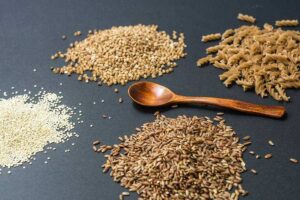
Eat ancient varieties of whole wheat, like kamut, spelt, and einkorn.
By now, you’re probably wondering what types of grains are better choices than the hybridized, sprayed, and processed options we normally see in stores. Here are some ideas:
Wheat Alternatives and Where to Buy Them
Ezekiel Bread
Search the frozen food section of your local grocery store for Ezekiel bread, a brand of bread comprised of a combination of grains and legumes: wheat, barley, millet, lentils, soybeans, and spelt. The grains are sprouted, a method of naturally neutralizing enzyme inhibitors and releasing stored nutrients, therefore multiplying the protein, bioavailable minerals, enzymes, vitamins, and more. Ezekiel Bread is also made without milled flour, so it touts the benefits of increased digestibility, increased vitamins (like B and C), and easier absorption of minerals.
Sprouted Grains
The good news is that more and more people are noticing the benefits of sprouted grains, so you have better choices at the grocery store and sometimes at restaurants. Make sure to buy only organic brown rice (in bread, and in general), as white rice is processed and most of the world’s rice is grown in China, where, after the Fukushima radioactive disaster, heavy metal contamination in conventional rice is high and common. Some popular brand names for sprouted grains are ShaSha Co. or Silver Hills for bread, TruRoots or Lundberg Farms for whole grains like lentils or quinoa, and Go Raw or Kashi for sprouted bars and cereals.
Ancient Whole Grains or Seeds
Ancient grains or seeds like sorghum, teff, millet, quinoa, buckwheat, or chia are excellent items to add to your shopping list, and none of those “grains” even contain gluten. (In fact, they don’t even technically qualify as grains, though they are similar in the ways they are cooked.) Many of these can be found in the health food section at your grocery store. Look for the brands Bob’s Red Mill or Arrowhead Mills
Non-Hybridized Grains
Non-hybridized grains are also called heritage grains, as they aren’t changed by selective breeding over the years. Cook them and serve hot or cold in many ways—with a sauce, like you’d serve over pasta, or tossed with salads or any combination of steamed or raw veggies. Popular brands of ancient grains include Ancient Harvest and Pure.
Manna or Yeast-Free Bread
Manna bread is a hearty, sprouted, and naturally-leavened bread that doesn’t require yeast in the baking process. Yeast is fed by sugar in the body and can be problematic for people with compromised gut issues and candida overgrowth. Yeast-free bread can be harder to find than the options mentioned above, but check with your local health food store. The most popular and widely available brand is Manna Organics.
Legumes
Though not a part of the grain category, legumes are worth a mention here. They’re an inexpensive way to get your fill of protein, fiber and micronutrients. They’re also extremely easy to find, and they don’t spoil quickly, so you can stock up your cupboard without worry of impending expiration dates. There are so many ways to eat legumes — sprouted on a salad, in a soup, in a stew, or seasoned as a side dish. You can find bags of dried legumes in the soup or bulk foods aisle of any grocery store.
To prepare dried legumes, rinse and soak them overnight. Add 3 cups of water for every 1 cup of dried legumes in your pot. (This is a rough estimate. If you didn’t go for the bulk version, read the package on your lentils, split peas, kidney beans, or other legumes as they do vary.) Bring them to a boil. Simmer until tender (about 45 minutes for lentils or split peas, 2-3 hours for beans).
[Related: Lucious Legumes free recipe ebook: my family’s favorite ways to eat legumes!)]
The Bottom Line: Eat More Unprocessed, Whole Foods
There are tens of millions of people living on this planet who are almost entirely without the “American” diseases of cancer, heart disease, or autoimmune conditions. These people primarily eat vegetables, greens, legumes, and grains (including wheat or other grains), as did our own ancestors in most cultures on most continents.
For example, some of the lowest Alzheimer’s rates occur in rural India,14 where people are eating mostly grains, plants, and beans and—very infrequently—meat and dairy. Yet when these people move to the U.S. and eat a Standard American Diet, their risk increases significantly.
Though the food industry now makes billions selling “gluten-free” junk food to the unsuspecting public, as I mentioned earlier, researchers now aren’t sure the gluten itself is what’s causing health problems.
So, maybe wheat itself isn’t the issue. Maybe it’s the way it has been hybridized, processed, or sprayed. And maybe, we eat the processed versions far too often.
How Not to Die
Bestselling author Dr. Michael Greger, MD., is one of my favorite experts in the field of plant-based research. He chronicles how to use diet to fight common causes of death (like breast cancer, infections, and heart disease) in his 2016 book, How Not to Die.
Greger documents thousands of published studies finding that a “whole-food, plant-based die" has been repeatedly shown not just to help prevent the disease, but arrest and even reverse it.”
More than 10,000 published studies now show the virtues of eating more unprocessed foods and more plants. Eating a whole food, plant-based diet fights disease. Eat plenty of fresh greens, vegetables and fruits, alongside whole grains and legumes, as well as nuts and seeds.
12 Steps to Whole Foods
If you want to make wheat a part of your diet, the good news is there are better, less-processed options, and you will likely find that when you heal your gut, you can return to enjoying grains.
Watch my “Rehab Your Gut with Food” video (part of my free video masterclass, “12 Steps to Whole Foods) to cut through the fads and controversies and fast-track your understanding of how gut health is critical to overall health. You’ll also learn why the right whole FOODS—not fads—are the simplest answer to what the food and diet industries have made into an overly-complicated puzzle.
Instead of getting distracted by and following the fads, we can look to our ancestors and human history for one clear directive—that we should eat less processed food and more whole food, including wheat.

Disclosure: This post may contain affiliate links that help support the GSG mission without costing you extra. I recommend only companies and products that I use myself.
Sources:
- “Gluten Free Food Market Size, Share, Growth, and Forecast to 2026.” Credence Research. April 2018.
- Foster-Powell, Kaye; Holt, Susannah HA; Brand-Miller, Janette C. “International table of glycemic index and glycemic load values: 2002.” The American Journal of Clinical Nutrition, Volume 76, Issue 1, July 2002, Pages 5–56, https://doi.org/10.1093/ajcn/76.1.5
- Elli, L. et al. “Increased Mercury Levels in Patients with Celiac Disease following a Gluten-Free Regimen.” Gastroenterology Research and Practice. 2015;2015:953042. doi: 10.1155/2015/953042. Epub 2015 Feb 23.
- “A Grassy Trend in Human Ancestors’ Diets.” The Unversity of Utah. June 3, 2013.
- Watson, T. “Ancient Oat Discovery May Poke More Holes in Paleo Diet.” National Geographic. September 11, 2015.
- Samuel, D. “Investigation of Ancient Egyptian Baking and Brewing Methods by Correlative Microscopy.” Science. American Association for the Advancement of Science. 26 Jul 1996: Vol. 273, Issue 5274, pp. 488-490. DOI: 10.1126/science.273.5274.488
- Warinner, C. “Debunking the paleo diet | Christina Warinner.” YouTube. TedX Talks. Feb 12, 2013.
- Samsel, A.; Seneff, S. “Glyphosate, pathways to modern diseases IV: cancer and related pathologies.” JBPC. Vol. 15 (2015).
- “World’s Number 1 Herbicide Discovered in U.S. Mothers’ Breast Milk.” Sustainable Pulse. Apr 6 2014.
- Cooper, R. “Re-discovering ancient wheat varieties as functional foods.” Journal of Traditional and Complementary Medicine. 2015 Jul; 5(3): 138–143. doi: 10.1016/j.jtcme.2015.02.004
- Carnevali, Andrea, et al. “Role of Kamut® Brand Khorasan Wheat in the Counteraction of Non-celiac Wheat Sensitivity and Oxidative Damage.” Food Research International 63 (2014): 218-26. Web. 5 Apr. 2017.
- Stella Colomba, M.; Gregorini, Armando. “Are Ancient Durum Wheats Less Toxic to Celiac Patients? A Study of α-Gliadin from Graziella Ra and Kamut.” Scientific World Journal. 2012; 2012: 837416. Published online 2012 May 2. doi: 10.1100/2012/837416
- F. Adams, The Genuine Works of Hippocrates. Baltimore, MD: Williams & Williams,1939.
- Hillis, K. “Alzheimer’s Statistics – United States & Worldwide Stats.” BrainTest.
Posted in: 12 Steps To Whole Food, Whole Food




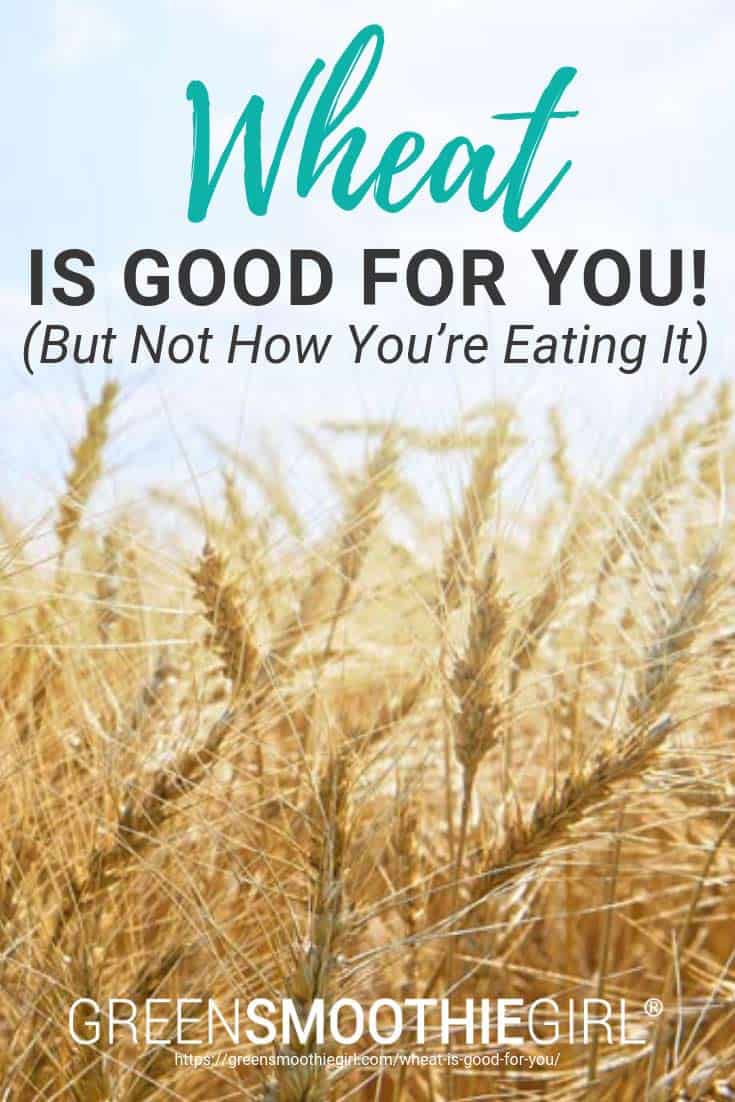













Great piece!
Isn’t the Soy bad?
Hello, Gary. My two cents on what I’ve learned from others on “soy:” non-genetically modified soy or soybean in true, unadulterated (unprocessed) form is best, for example, pure miso, tempeh. Articles, peer-reviewed journals, and studies reported by individuals such as Dr. Russell L. Blaylock, Dr. Mercola, and others, provide more information on soy.
I grind my own organic wheat and make bread and other bread recipes with it. To me this seems to be to be a healthy way to eat wheat. I do notice you don’t advocate this though. ( I am also “careful” with the oils and sweeteners I use.) What are your thoughts on 100% homemade freshly ground whole wheat products as part of a healthy diet?
Most of ” the world’s rice is grown in China, where, after the Fukushima radioactive disaster, heavy metal contamination in conventional rice is high, and common.”
Please know that it was a Japanese disaster. And why have you not mentioned the rice that comes from India?
China and Japan are close to each other geographically!
I was wondering too about the “Fukushima” remark. Japan not China. I heard we are growing rice in the USA also? probably full of GMOs.
A great read, thank you. I did notice the word “fermented” appears only once in this article and it does so under negative connotations. Please add some information so your readers may also be educated about the benefits of fermented (e.g. sourdough) bread.
Thanks again,
Thank you, Greg, and we appreciate your feedback. You’ll be pleased to know Robyn’s a big advocate of fermented foods and has spoken a lot on this topic through blogs and videos. She even dedicates an entire step on fermentation in her 12 Steps to Whole Foods manual and it’s the first step she encourages all her Detoxers to implement once off her 26-Day Detox program.
A lot of negative innuendo over modern agricultural techniques and technologies but little by way of peer reviewed studies to support the “thots”.
You might want to publish this on Kindle books, it covers a lot of great information. Most people would expect you to fill a book with a lot of non-essential information, bu this article covers just what you need to know without all the extra stuff. I would rather read a 20 page useful fact filled booklet than wade through 250 pages of wasted words and time.
Hi John, We appreciate your feedback and thrilled to know you enjoyed Robyn’s post!
Another factor involved with wheat – and other products – is the GMO engineering. Various articles state it is widespread and others minimal. That all gets pretty mysterious trying to figure out what is actually happening in the industry. Ironically we may wind up having plants that can survive despite extremes of heat, cold, and remain pest free but offer less nutrient value than previously. In fact GMO products may even be detrimental to our health.
Steve, you hit the nail on the head! It’s pretty mysterious for sure.
I was so much embarrassed with obesity few months back and my BMI was way too much. But I was lucky that friend of mine recommanded this CUSTOM KETO DIET guide and it changed my life. I hope you guys also can try it if you have a story like mine.bit.ly/2DSmRvf
This is the most comprehensive article I have found about this. I am becoming very disillusioned with functional medicine. Seems we have found another bandwagon to jump on in our search for health. I am convinced that "good" wheat and grains are actually necessary for good gut health. Dysbiosis should be able to be cured, but it seems many continue to suffer, and even become more sensitive to foods, after they cut the gluten. I absolutely agree that we should not be completely cutting these out of our diets. Maybe short term to restore gut integrity…but defintely not forever. I am going to attempt making bread from some organic flour I bought from Bluebird Farms online. Do you know anything about this company? And how would you recommend going about reintroduction to organic wheat and gluten based grains?